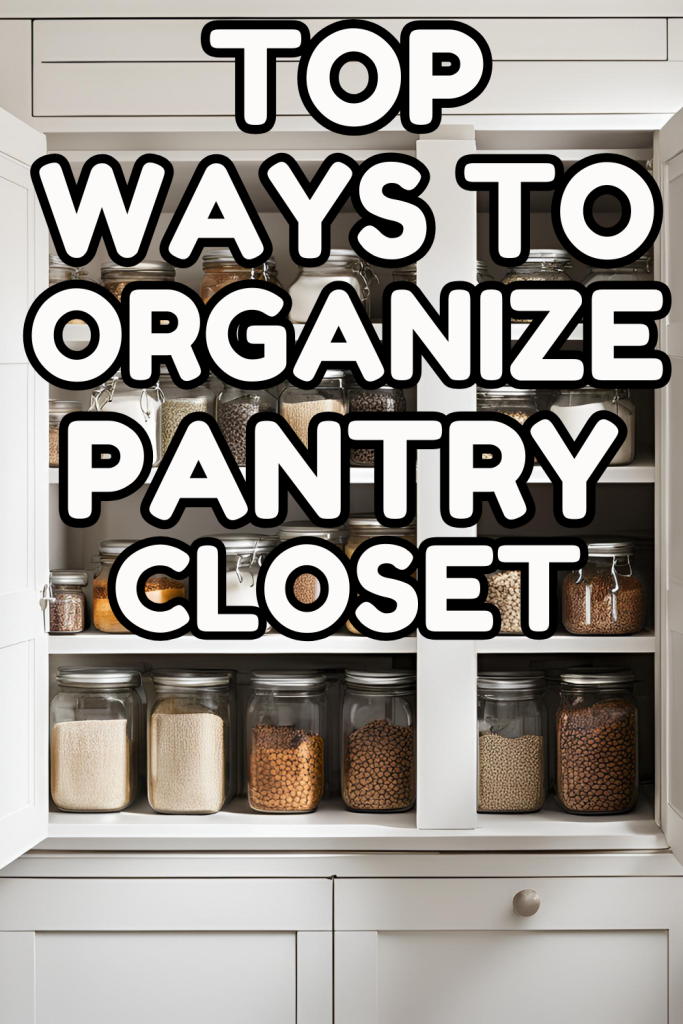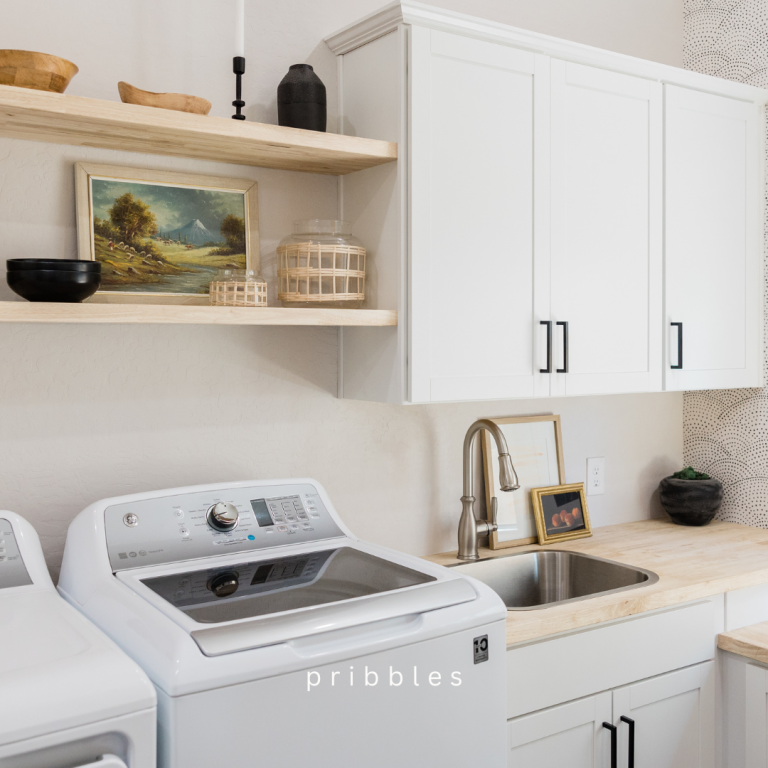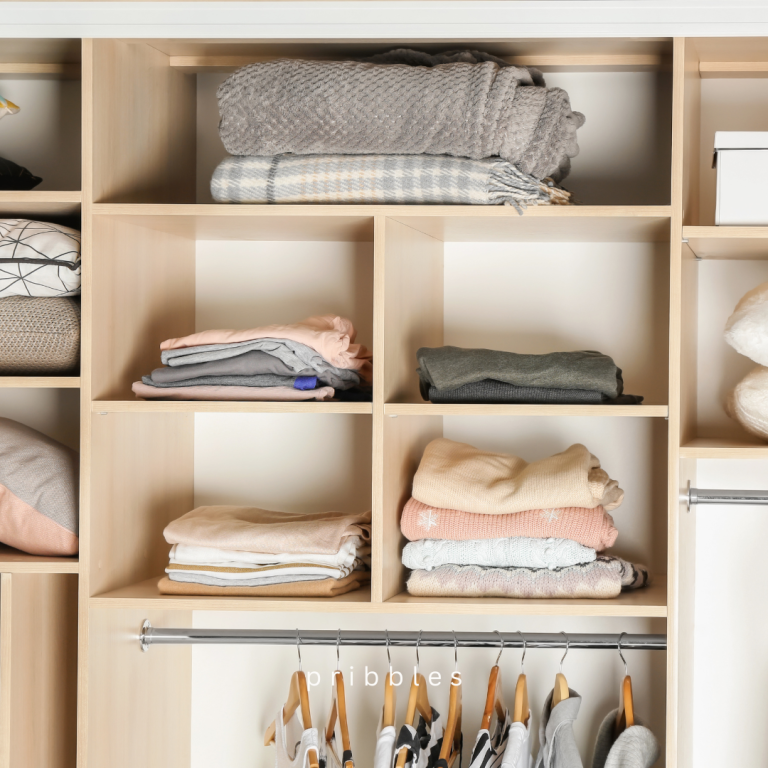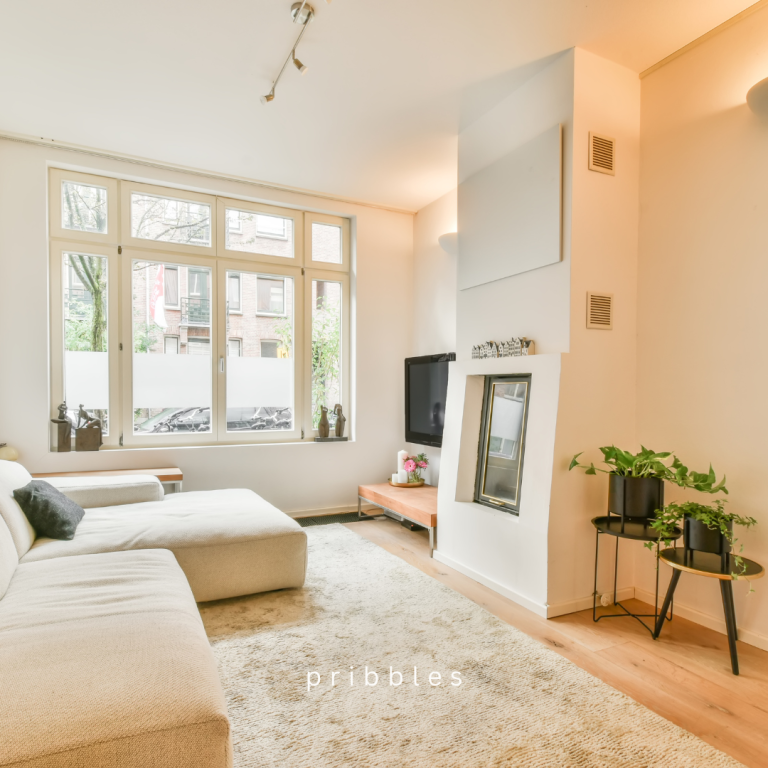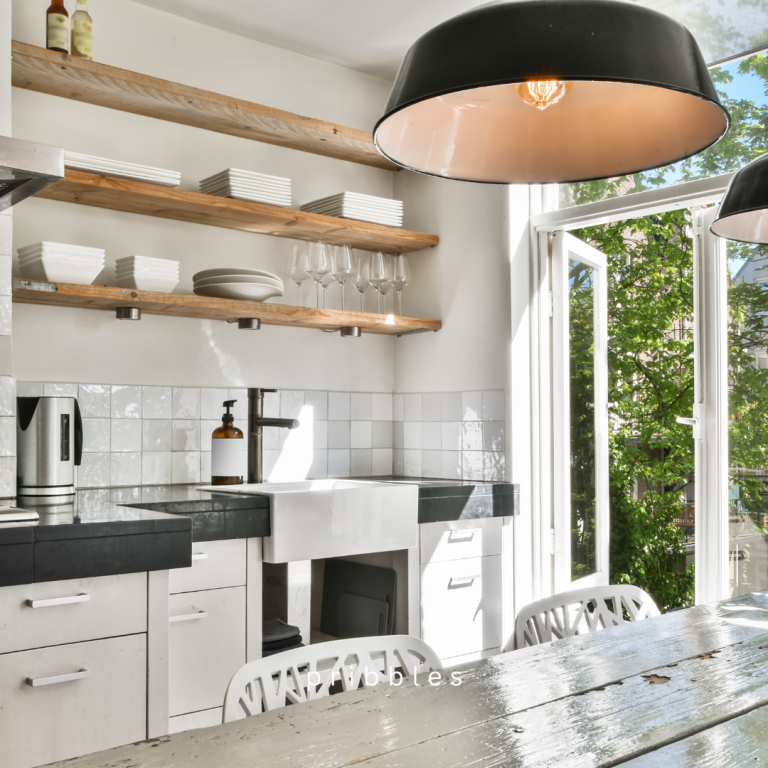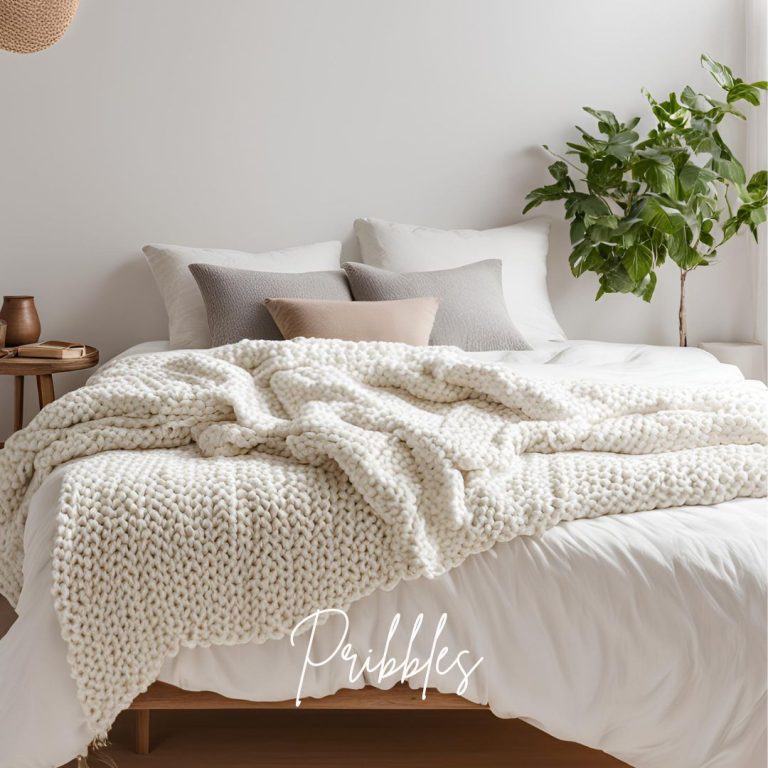How to Organize A Pantry: 23 Tips for Any Sized Pantry
I absolutely love my pantry—it’s easily one of my favorite spots in the house.
There’s just something so satisfying about opening the door to neatly arranged shelves, labeled containers, and everything in its place.
Having an organized pantry has truly been a game changer for me. It’s made cooking easier, and grocery shopping more efficient, and honestly, it just brings me a little spark of joy every day.
In this article, I’m sharing 27 of my favorite pantry organization hacks to help you transform your space into a functional, clutter-free, and beautiful area you’ll love as much as I do!
More to Read:
- 17 Genius Small Closet Organization Hacks
- 23 Genius Laundry Room Organization Hacks
- 29 Sensational Ways to Maximize a Small Living Room
- Easy Small Bathroom Organization Ideas
- 13 Amazing Small Bedroom Inspirations
Save for Later
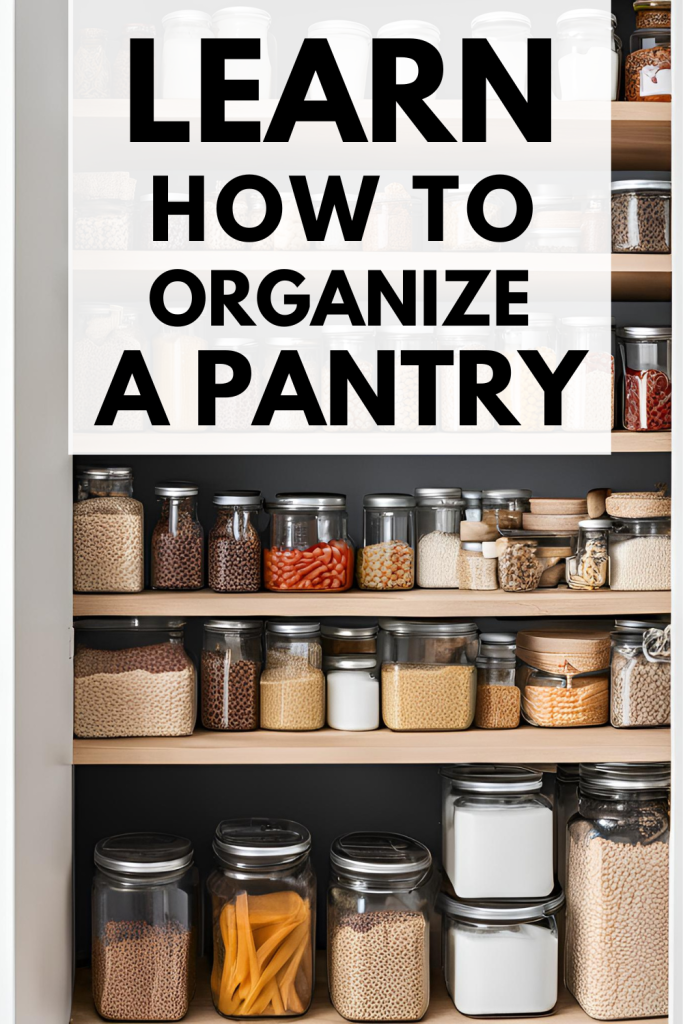
Affiliate links may be used in this post and if so I will receive a commission at no extra cost. I’m also part of the Amazon Affiliate (Associate) program where I earn a commission from sales made through my affiliate links. Read the full disclosure policy.
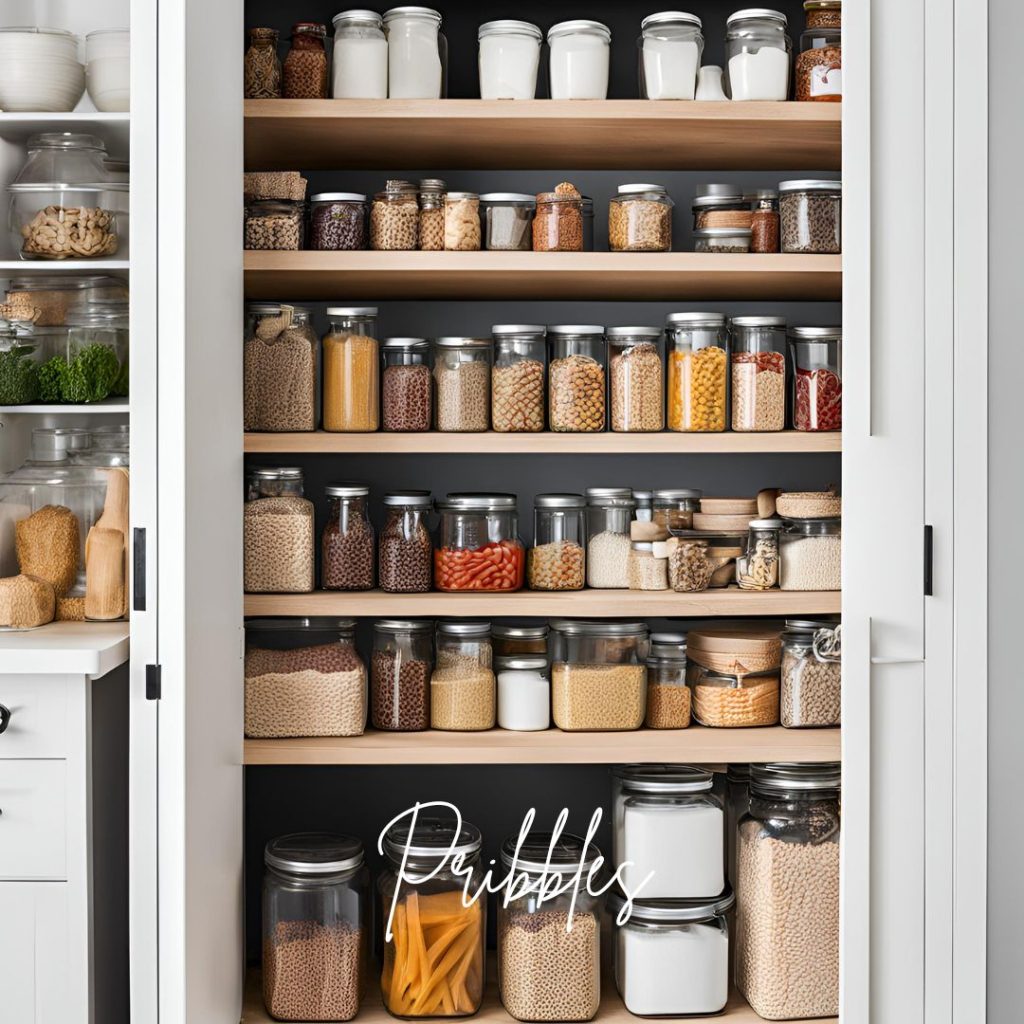
27 Steps: How to Organize Any Pantry
Whether you have a large walk-in pantry or a small cabinet to work with, these tips are perfect for creating a space that’s not only organized but also easy to maintain.
From clever storage solutions to ideas for maximizing every inch of space, these hacks will help you streamline your pantry and make it work better for you.
So, grab your favorite beverage, and let’s dive into these 27 game-changing pantry organization ideas—you’ll be amazed at how much of a difference they can make!
1- Group Similar Items Together
Organizing your pantry by grouping similar items is one of the easiest and most effective ways to keep things tidy and functional.
It’s like giving your pantry a logical flow—everything has a home, and you’ll always know where to find what you need.
It makes unpacking groceries a breeze since you know exactly where everything goes.
Here’s how to get started:
- Baking Supplies: Keep all your flour, sugar, baking powder, chocolate chips, and vanilla extract in one section. You can even add small bins or baskets to corral cupcake liners and sprinkles!
- Canned Goods: Arrange canned vegetables, soups, and beans together, ideally with labels facing forward so you can see everything at a glance. A tiered shelf organizer works wonders here!
- Snacks: Dedicate a bin or shelf for snacks like granola bars, chips, crackers, and dried fruit. Bonus: Keep this area at eye level if you have kids so they can grab their favorites easily.
- Spices: Place all your spices in one spot—either in a spice rack, drawer, or on a lazy Susan. Group them alphabetically or by usage (like “everyday cooking” vs. “holiday baking”) for extra ease.
- Breakfast Items: Keep cereal, oatmeal, pancake mix, and syrups together for a grab-and-go breakfast zone. It makes busy mornings so much simpler!
This simple method not only makes finding and putting away items a breeze, but it also helps you avoid overbuying things you already have.
No more digging through a disorganized pantry—everything you need is right where it belongs!
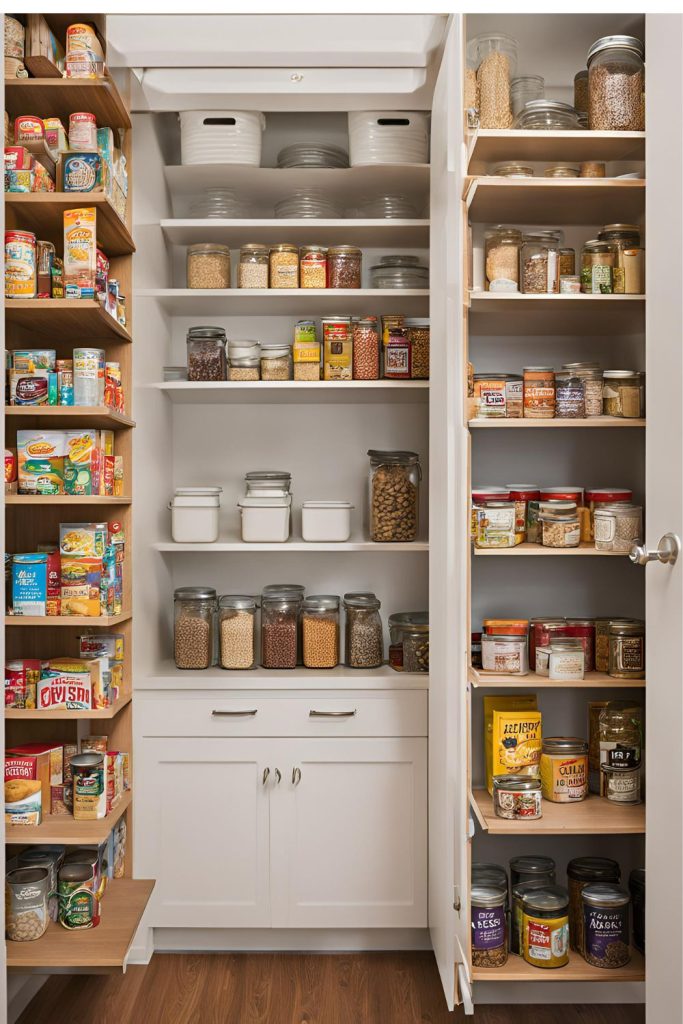
2- Use Clear Containers
Switching to clear containers is a pantry game changer! Not only do they give your shelves a clean and cohesive look, but they’re also incredibly practical.
You’ll always know exactly how much you have left, and airtight lids help keep everything fresher for longer.
Here’s how to make the most of clear containers:
- Flour and Sugar: Transfer these baking staples into large, airtight containers with scoops inside for easy access. Bonus: No more messy bags spilling everywhere!
- Rice, Pasta, and Grains: Store these in medium-sized clear containers and label them with cooking instructions if needed. It’s a huge time saver!
- Snacks and Treats: Use smaller clear containers for items like cookies, crackers, or trail mix. They look inviting and keep everything from going stale.
- Bulk Items: Bought a giant bag of quinoa or beans? Split it into smaller clear containers for easier storage and handling.
- Kid-Friendly Options: Use clear jars for things like gummy snacks or cereal and place them on lower shelves where kids can see and reach them.
The beauty of clear containers is how streamlined and organized your pantry will feel.
Plus, they make it easy to spot when you’re running low on an ingredient, so you can add it to your grocery list before it’s too late.
It’s an upgrade you’ll love every time you open the door!
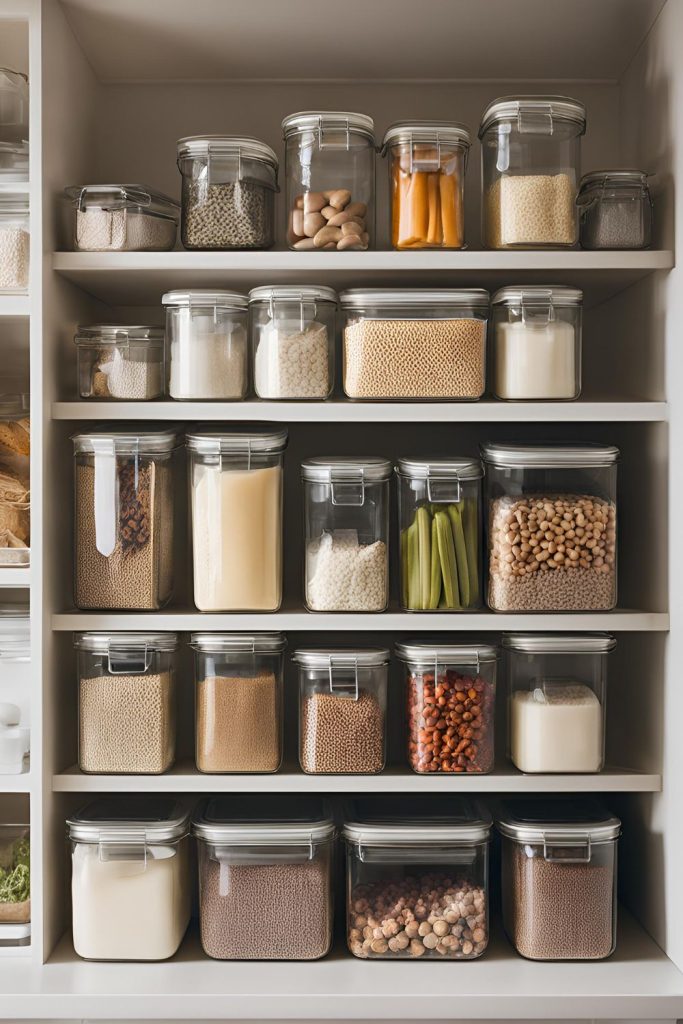
3- Label Everything
Labels are the secret weapon for a pantry that stays organized! When everything has a clearly marked spot, there’s no guesswork about where things belong, and everyone in the house can help keep it tidy. And, they add a polished, stylish touch to your containers and bins.
Here’s how to make labeling work for you:
- Chalkboard Labels: Use reusable chalkboard stickers for a customizable look. If you switch contents, you can easily erase and rewrite the label. Perfect for bins and jars!
- Printable Stickers: Download and print sleek, minimalistic labels that match your style. There are tons of free templates online to choose from.
- Bold Lettering: For high-traffic items like snacks or cereal bins, opt for big, bold labels that are easy to read at a glance.
- Custom Categories: Label zones like “Baking Supplies,” “Canned Goods,” or “Snack Station” to guide everyone on where things go.
- Kid-Friendly Labels: Use colorful or picture-based labels for younger kids who can’t read yet. A bin labeled with a drawing of crackers makes it easier for them to pitch in!
Labels aren’t just about looks—they’re about making your pantry work harder for you. No more playing pantry detective to figure out what’s inside a random jar or container.
Everything is clear, neat, and ready to use!
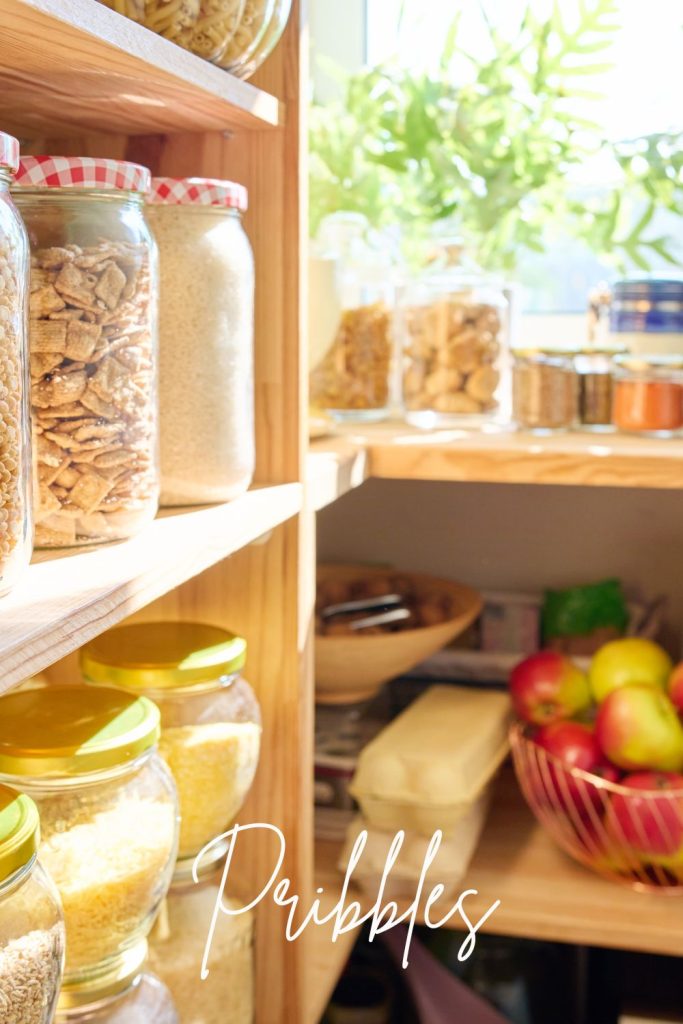
4- Install Adjustable Shelving
Adjustable shelving is a total pantry lifesaver, especially if your needs change often. It lets you maximize every inch of space by customizing shelf heights to fit whatever you’re storing, from tall cereal boxes to short spice jars.
Here’s how to make adjustable shelving work for you:
- Tall Items: Create extra height for items like cereal boxes, bulk containers, or bottles of oil by adjusting shelves upward. No more squeezing or tipping things to fit!
- Small Items: Lower shelves to fit jars, cans, or snacks so you don’t waste vertical space with large gaps. This keeps everything within easy reach and organized.
- Seasonal Changes: Adjust shelving as your needs change. For example, you can add space for holiday baking supplies during the winter or outdoor picnic items in summer.
- Add Dividers: Pair adjustable shelves with dividers to create dedicated zones, like one for spices or another for snacks.
- Child-Friendly Zones: Adjust lower shelves to create kid-accessible spaces for snacks or school lunch supplies, while keeping breakable or hazardous items higher up.
The beauty of adjustable shelving is its flexibility. So, if you’re dealing with a small pantry or a big family with changing needs, this upgrade helps you get the most out of your space—no matter what you’re storing!
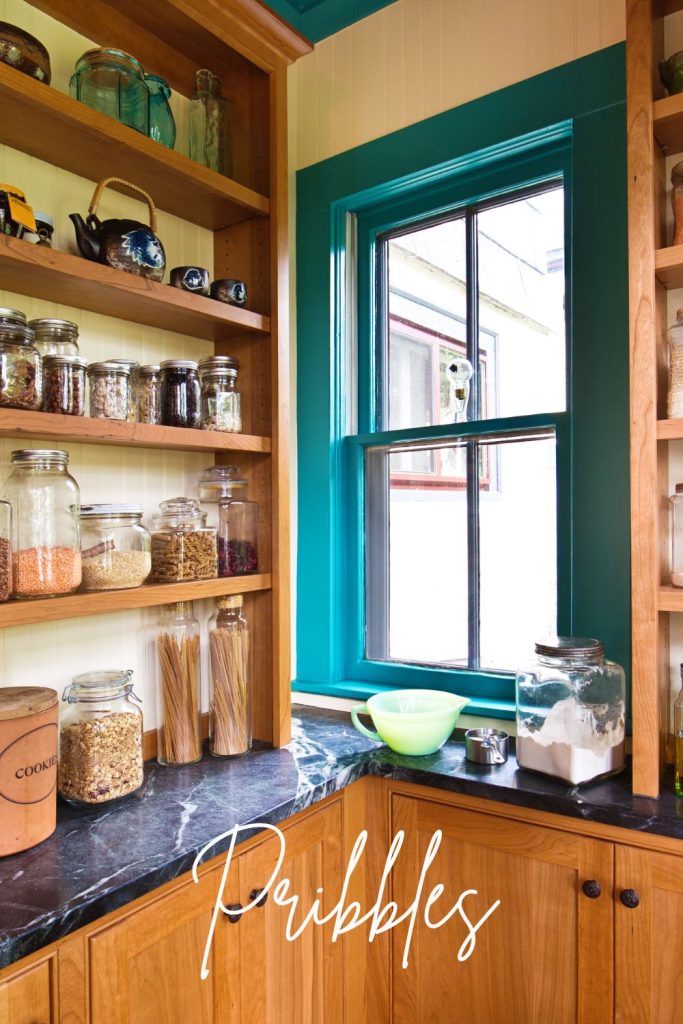
5- Utilize Door Space
Don’t overlook the back of your pantry door—it’s prime real estate for extra storage! With an over-the-door organizer, you can keep small items neatly tucked away and free up shelf space for larger essentials. It’s a simple way to make your pantry more functional.
Here’s how to make the most of your door space:
- Spices and Seasonings: Use the pockets to store small jars, seasoning packets, or bottles of oil and vinegar. It’s a great way to keep these items visible and within reach.
- Snacks on the Go: Fill the pockets with grab-and-go snacks like granola bars, trail mix, or single-serve crackers, making it easy to pack lunches or satisfy hunger quickly.
- Baking Tools: Dedicate pockets for small tools like measuring spoons, cookie cutters, or cupcake liners. No more rummaging through drawers!
- Cleaning Supplies: Store items like microfiber cloths, a small dustpan, or spare sponges in an organizer if you don’t have another convenient spot.
- Kids’ Zone: Add kid-friendly snacks or juice boxes to the lower pockets so little ones can help themselves.
Using your pantry door is a game changer, especially if you’re working with limited space.
It keeps smaller items organized and frees up shelves for bigger pantry staples—all while keeping everything easy to find!
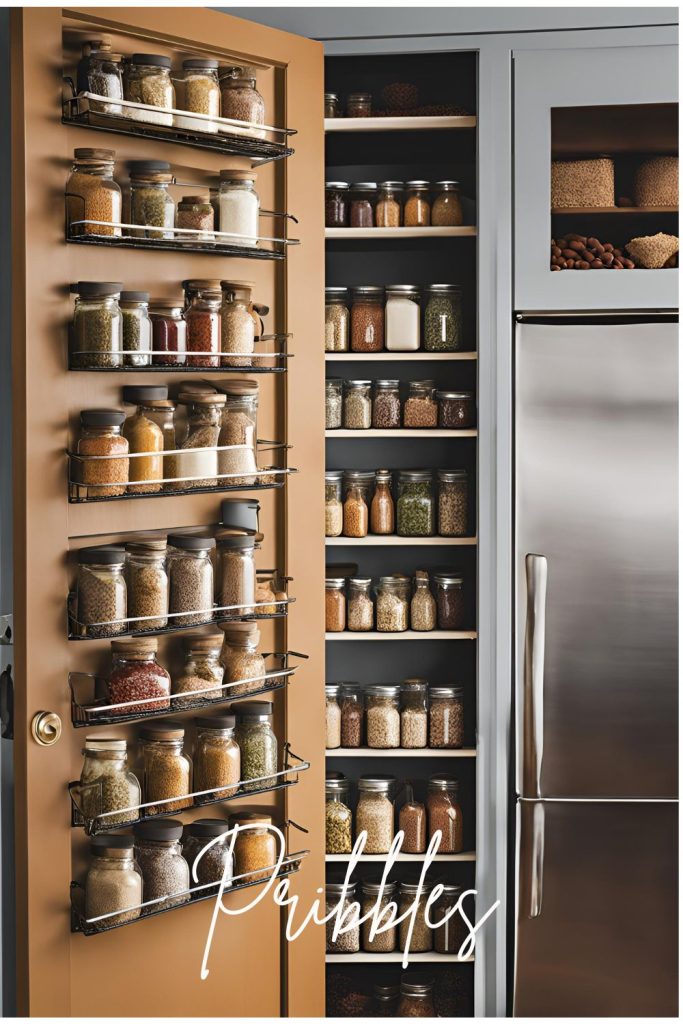
6- Add Lazy Susans
Lazy Susans are a pantry MVP when it comes to making deep shelves or hard-to-reach corners more functional. With just a quick spin, you can see and grab whatever you need without digging through everything else. They’re perfect for keeping your pantry organized and frustration-free!
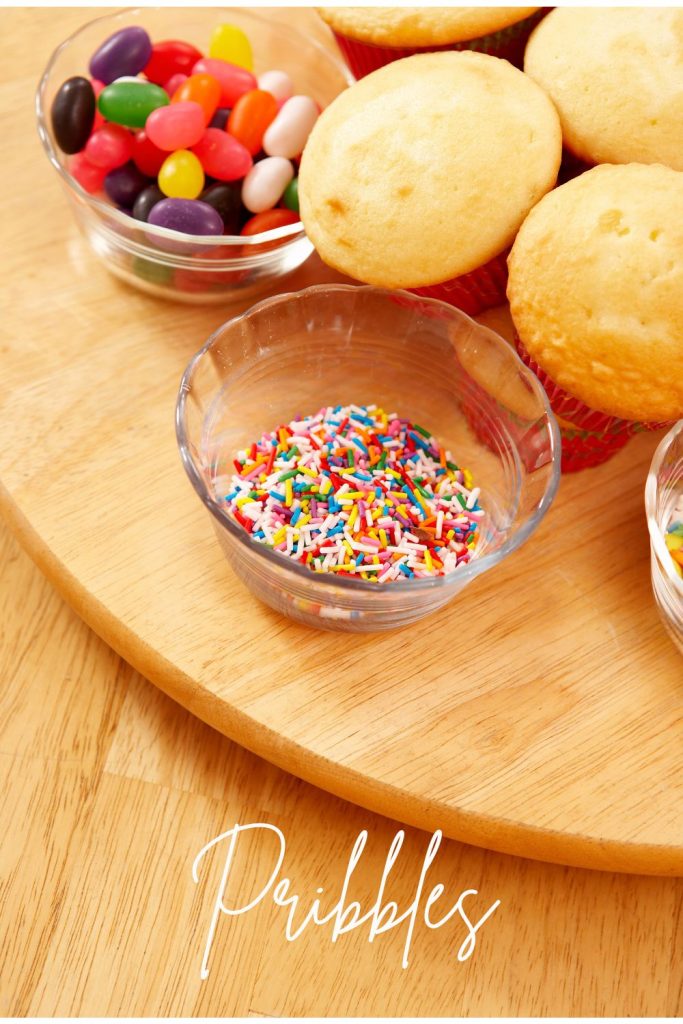
Here’s how to use them effectively:
- Condiments and Sauces: Store bottles of vinegar, cooking oil, ketchup, or soy sauce on a lazy Susan for quick access. No more tipping over half the shelf to find one bottle!
- Canned Goods: Group your smaller cans of soup, beans, or tomato paste on a lazy Susan to avoid losing them at the back of the shelf.
- Spices: If you don’t have a spice rack, use a smaller lazy Susan for spice jars. It’s an easy way to keep them organized and within reach.
- Snacks: Keep single-serve snack packs or nut jars on a lazy Susan so everyone in the family can easily grab their favorites.
- Supplements and Vitamins: Use a lazy Susan for storing vitamins, protein powders, or other small containers that can get lost in the shuffle.
Lazy Susans are not only practical but also a fun way to streamline your pantry.
They make accessing items so much easier, especially in those deep, awkward spaces where things tend to disappear!
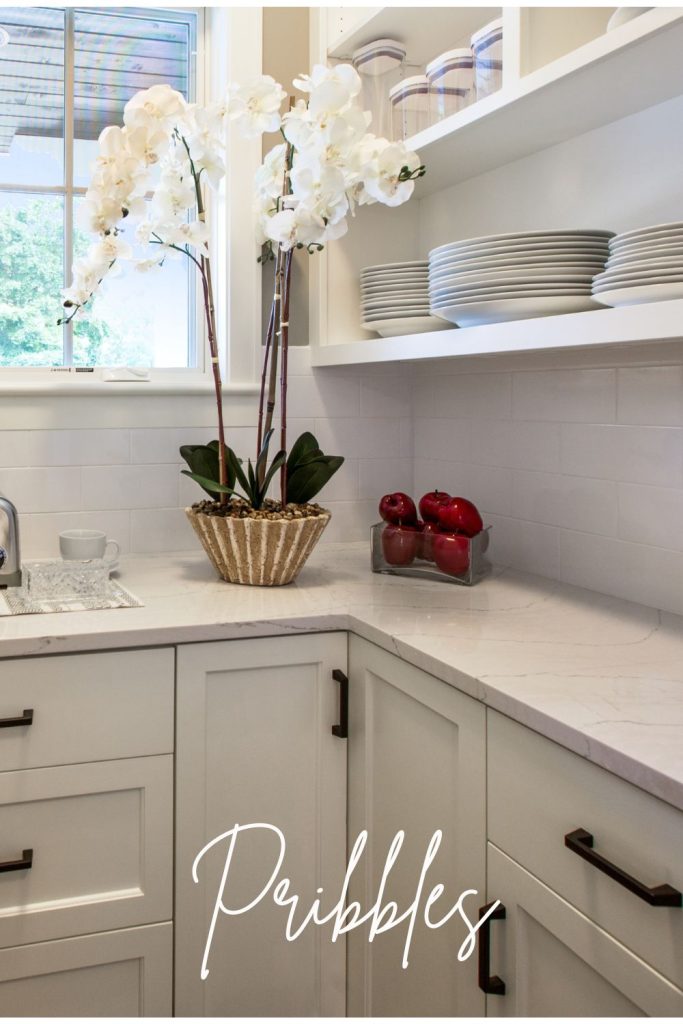
7- Use Stackable Storage Bins
Stackable storage bins are a must-have for making the most of your pantry’s vertical space. They’re perfect for keeping everything neatly organized while still being easy to access. They come in all shapes and sizes, so you can customize them to fit your needs.
Here’s how to use them like a pro:
- Snack Zone: Use stackable bins to separate chips, granola bars, and other snacks. Label each bin so everyone knows where to find their favorites.
- Canned Goods: Stack bins to sort canned vegetables, soups, and beans by type. It saves space and keeps your pantry looking tidy.
- Produce Storage: Choose ventilated stackable bins for items like onions, potatoes, or garlic. They’ll stay fresh while being neatly contained.
- Baking Supplies: Store small bags of chocolate chips, sprinkles, or cookie cutters in stackable bins to create a baking section that’s easy to grab when you’re ready to bake.
- Kid-Friendly Options: Create a kid-accessible stack with juice boxes, fruit snacks, or crackers at the bottom for little hands to reach.
With stackable bins, you can build upwards instead of spreading out, making your pantry feel bigger and better organized.
They’re simple, practical, and a total game changer for keeping everything in its place!
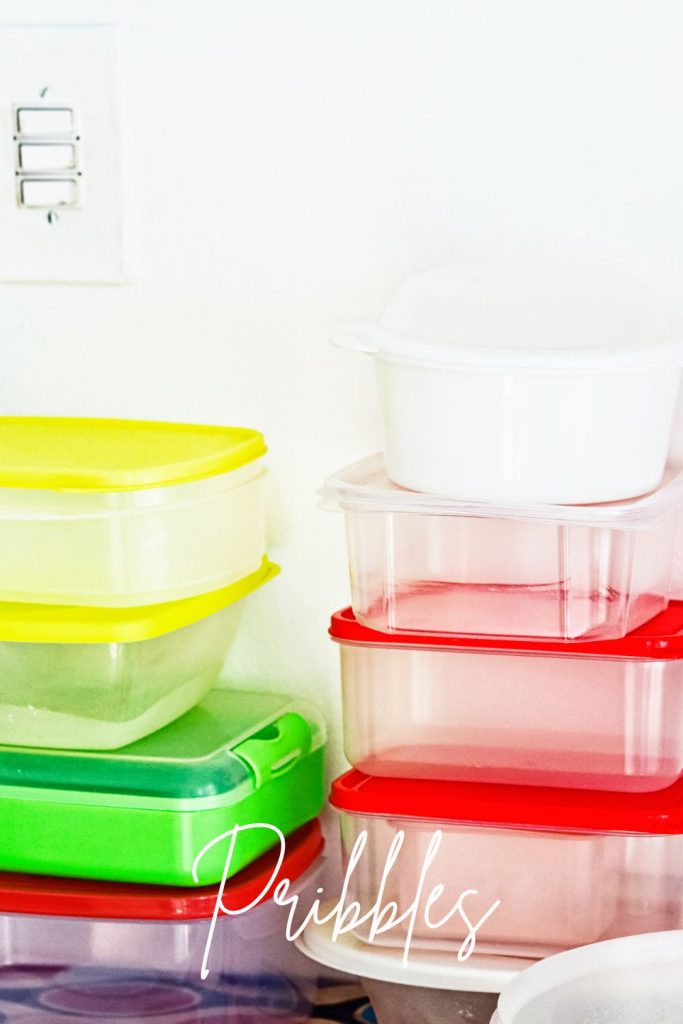
8- Create Zones
Designating specific zones in your pantry is like giving it a personal blueprint—it makes everything easier to find and keeps the space feeling organized and intentional. By grouping items by their use or purpose, you’ll streamline your pantry and simplify your daily routine.
Here are some ideas to get started:
- Breakfast Zone: Store cereal, granola, oatmeal, coffee, tea, and breakfast bars together. Add small containers for things like honey or syrup to keep it all in one spot.
- Baking Zone: Dedicate a section for flour, sugar, baking powder, cocoa powder, and vanilla extract. Don’t forget bins for smaller items like cupcake liners or food coloring.
- Snack Station: Keep chips, pretzels, fruit snacks, and cookies in one zone. This is especially handy if you have kids who love grab-and-go snacks.
- Cooking Zone: Group oils, vinegars, sauces, and frequently used spices together for easy meal prep. You can also add canned tomatoes, pasta, and rice here for a dinner-ready section.
- Drink Zone: Dedicate a shelf to bottled water, soda, juice boxes, or powdered drink mixes. It’s great for keeping beverages separate from food.
Creating zones transforms your pantry into a system that works for your lifestyle.
So, if you’re rushing to make breakfast or prepping for dinner, everything you need will be right where it belongs!
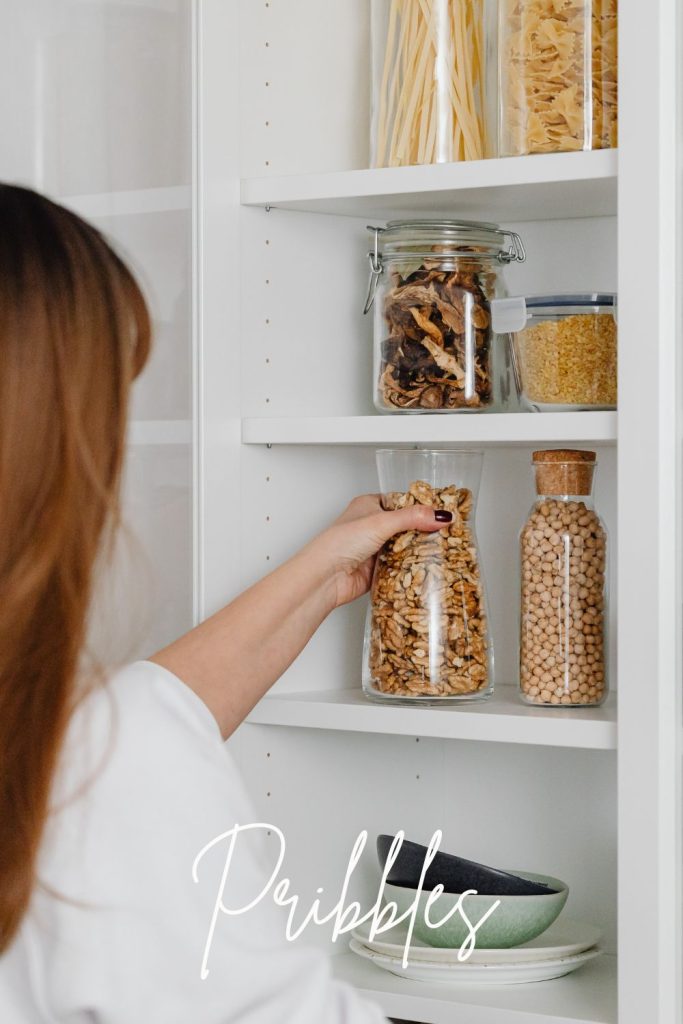
9- Add a Pull-Out Drawer
Pull-out drawers are a game changer for managing heavy or bulky pantry items. They make accessing everything from the back of the shelf a breeze—no more bending, digging, or knocking things over to grab what you need.
Here’s how to use pull-out drawers to their full potential:
- Produce Storage: Use pull-out drawers for heavier items like potatoes, onions, or squash. Ventilated designs work best for keeping produce fresh.
- Large Jars and Containers: Store big jars of pasta sauce, bulk peanut butter, or oversized bags of rice in a pull-out drawer for easy handling.
- Baking Supplies: Dedicate a drawer to baking essentials like sugar, flour, and measuring cups. You’ll love being able to slide it out and see everything at once.
- Kid Snacks: Install a lower pull-out drawer for kids to access snacks, juice boxes, or lunch supplies on their own. It’s a win for independence and organization.
- Canned Goods: Use pull-out drawers to organize canned foods, so you can quickly grab what you need without moving everything around.
Pull-out drawers make your pantry more functional and help maximize storage in even the tightest spaces.
They’re a simple upgrade that adds convenience and keeps everything easily within reach!
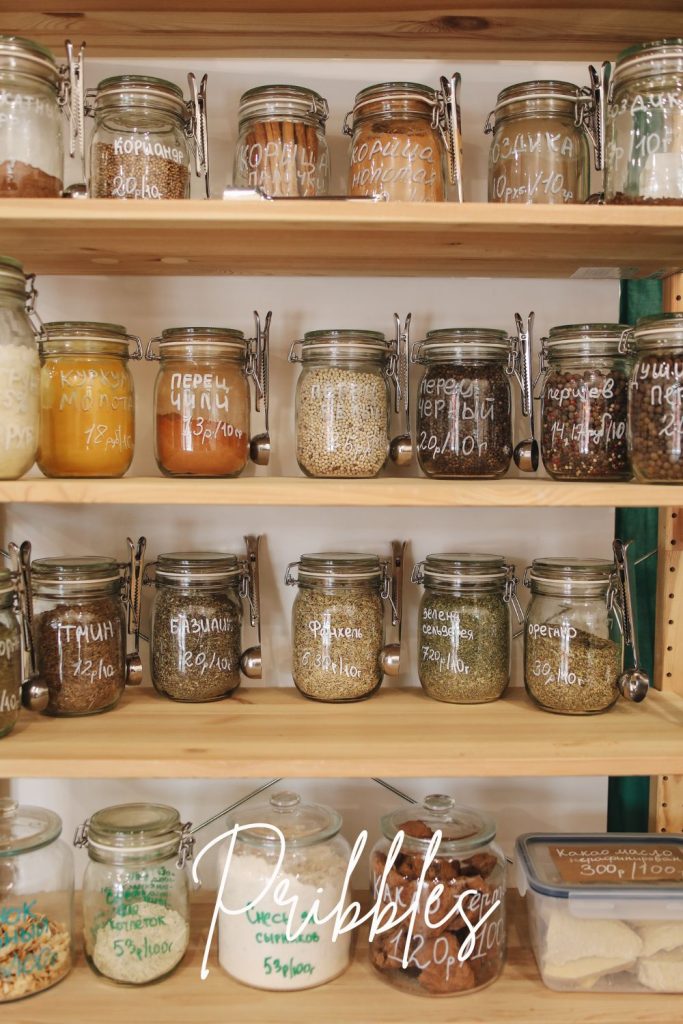
10- Hang Hooks for Bags
Adding hooks inside your pantry is a simple yet effective way to keep reusable grocery bags, lunch bags, or aprons organized and off the floor. It’s a quick upgrade that instantly frees up space while keeping these essentials within easy reach.
Here’s how to make the most of pantry hooks:
- Reusable Grocery Bags: Hang your reusable shopping bags on sturdy hooks so they’re always ready to grab before heading out the door. No more hunting for them in random drawers or corners!
- Lunch Bags: Keep lunch bags neatly hung and out of the way. It’s a great way to keep them clean and easy to access during busy mornings.
- Aprons: Hang aprons on hooks for a tidy, accessible spot that keeps them wrinkle-free and ready for your next baking or cooking session.
- Small Kitchen Tools: Use hooks to hang lightweight tools like oven mitts, measuring cups, or kitchen scissors for extra storage.
- Kids’ Items: If your pantry doubles as a snack zone, hang kids’ backpacks or small totes for after-school grab-and-go convenience.
Hooks are a simple, budget-friendly solution to add organization to your pantry.
They make the space feel less cluttered while keeping everyday items handy and easy to find!
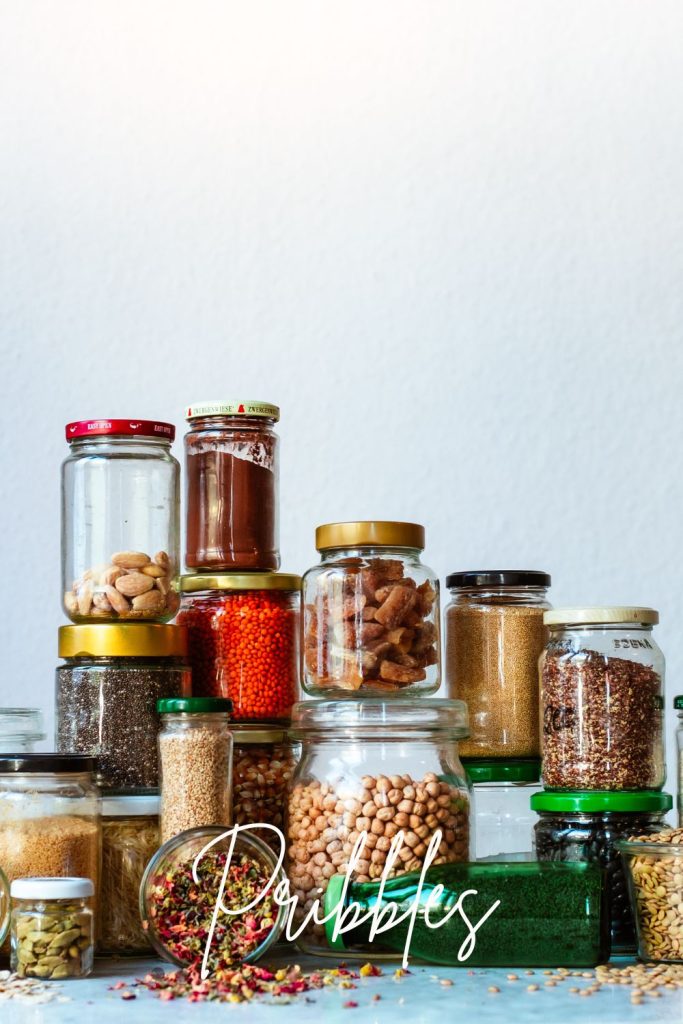
11- Use Wire Baskets
Wire baskets are a stylish and practical way to keep your pantry organized. They’re ideal for storing loose or bulky items while adding a touch of charm to your setup. With their breathable design, they’re especially great for produce and snacks.
Here’s how to make the most of wire baskets:
- Produce Storage: Use wire baskets to store onions, potatoes, garlic, or even fresh fruit. The airflow keeps your produce fresher for longer.
- Snack Bars and Juice Boxes: Toss granola bars, trail mix packs, or juice boxes into wire baskets to create a grab-and-go snack zone. It’s perfect for kids and busy mornings!
- Baking Essentials: Keep bags of chocolate chips, small packs of nuts, or cookie cutters in a basket for easy access during baking projects.
- Pantry Overflow: Use baskets to corral items that don’t stack well, like single-serve chip bags or odd-shaped jars, so they don’t clutter up your shelves.
- Tiered Storage: Stack baskets vertically or use wall-mounted wire baskets to maximize space while keeping everything visible.
Wire baskets are as functional as they are visually appealing.
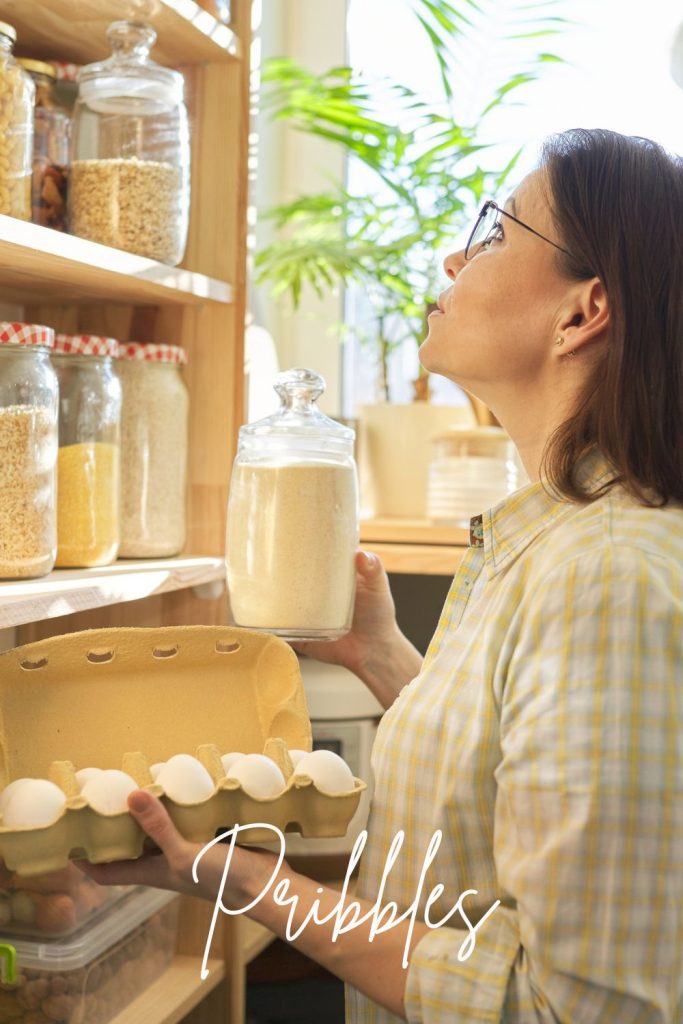
12- Incorporate Tiered Shelves
Tiered shelves are a genius way to make the most of your pantry space while keeping everything visible and accessible. By creating levels, they let you see all your items at a glance, so nothing gets forgotten in the back.
Here’s how to use tiered shelves effectively:
- Canned Goods: Organize cans of soup, beans, or vegetables on tiered shelves. The staggered design ensures every can is visible, making meal prep quicker and easier.
- Spices: Store your spice jars on a smaller tiered shelf to keep them upright and easy to find. No more rummaging through a jumbled spice rack!
- Jars and Bottles: Use tiered shelves for jars of jam, sauces, or condiments. It’s perfect for deep shelves where items tend to get lost.
- Pantry Overflow: For small snacks or baking essentials, tiered shelves keep everything orderly and easy to grab without knocking things over.
- Adjustable Options: Choose adjustable or expandable tiered shelves to fit your space perfectly and make the most of every inch.
Tiered shelves bring organization and visibility to your pantry, transforming it into a streamlined space where nothing gets overlooked. They’re a small upgrade with a big impact!
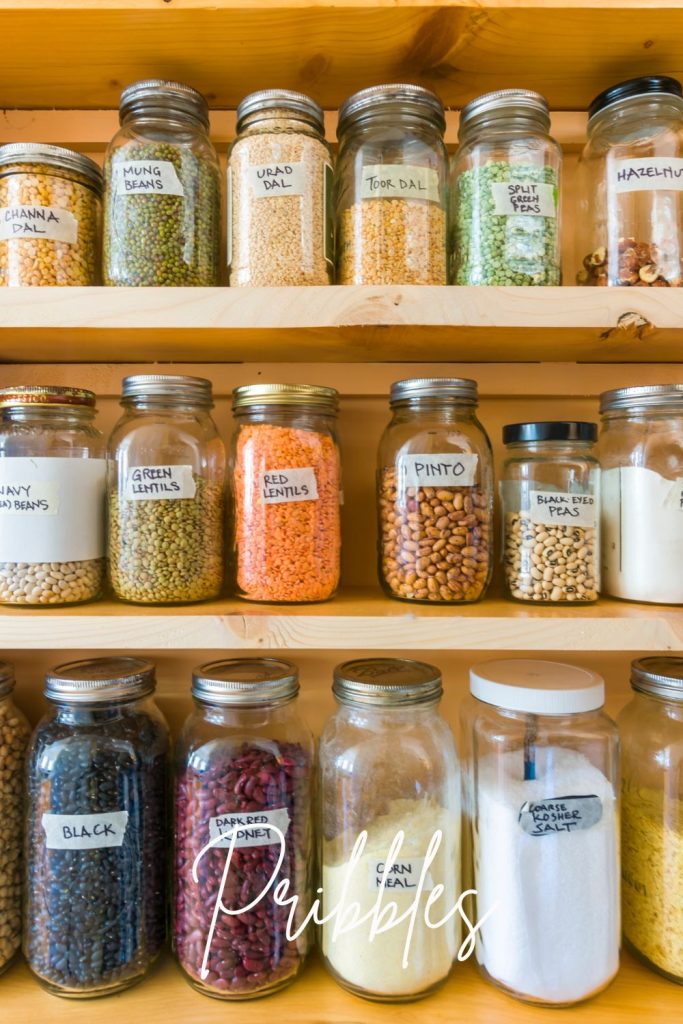
13- Add a Chalkboard or Whiteboard
A chalkboard or whiteboard on your pantry door is a simple yet incredibly useful addition. It’s a great way to stay organized by keeping track of grocery lists, meal plans, or reminders without hunting for a notepad.
Here’s how to make the most of this handy feature:
- Grocery Lists: Write down items you run out of right away, so you don’t forget to add them to your shopping list. Encourage everyone in the house to jot down what they need, too.
- Meal Plans: Plan out weekly meals and snacks directly on the board. It’s a visual reminder of what’s for dinner and helps streamline grocery shopping.
- Reminders: Use it for quick reminders like “Don’t forget the cookies for the bake sale!” or “Use the bananas before they overripe.”
- Inspirational Quotes: Add a fun or inspiring message to brighten your day while you’re reaching for snacks or meal ingredients.
- Family Communication: Let the kids leave little notes or doodles—it’s a fun way to keep everyone involved and using the space creatively.
Whether you choose a chalkboard for a rustic touch or a whiteboard for a clean, modern vibe, this addition makes your pantry not just organized but also interactive and fun!
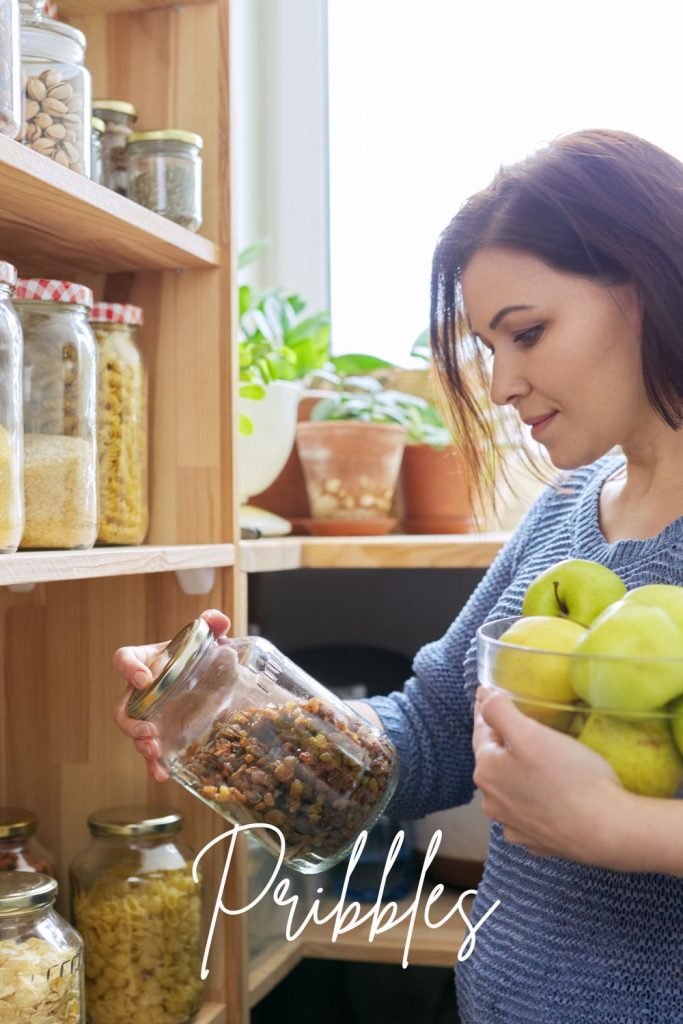
14- Store Bulk Items in the Back
Storing bulk items in the back of your pantry is a smart way to keep everyday essentials front and center. By giving less frequently used items their own designated spot, you’ll make your pantry feel more spacious and functional.
Here’s how to do it effectively:
- Bulk Staples: Place large bags of rice, flour, or sugar on higher shelves or in the back. They’ll stay out of the way but accessible when it’s time for refills.
- Seasonal Supplies: Keep items like holiday baking ingredients or large party platters in the back since they’re only needed occasionally.
- Backup Stock: Store extra canned goods, bottles of oil, or snacks in the back to rotate forward as you use up current supplies.
- Use Bins or Baskets: Group bulk items in labeled bins for easy access and to prevent them from looking messy.
- Keep a Step Stool Handy: If you’re storing bulky items on higher shelves, a foldable step stool makes it easy to grab them when needed.
By giving bulk items their own zone, you’ll create a pantry that’s both organized and easy to navigate, without sacrificing precious space for your daily go-to items!
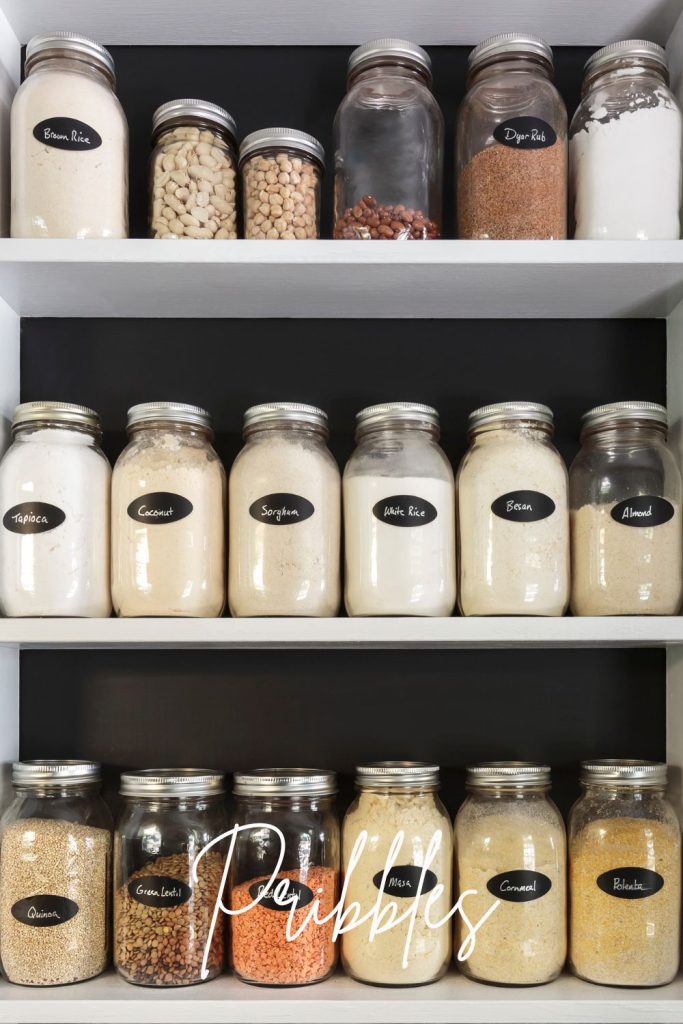
15- Line Shelves
Lining your pantry shelves is a simple way to keep the space clean and protect your surfaces from spills, crumbs, and wear. It’s an easy upgrade that makes a big difference in keeping things tidy and organized.
Here’s why shelf liners are a pantry must-have:
- Easy Cleanup: When spills or crumbs happen, you can simply wipe down the liner instead of scrubbing the shelves. For stubborn messes, some liners are removable and washable.
- Protects Shelves: Shelf liners prevent scratches on wooden or painted shelves and keep items from snagging on wire shelving.
- Adds Grip: Non-slip liners help keep containers, jars, and baskets in place, so nothing slides around when you’re reaching for something.
- Customizable Options: Choose from a variety of materials like plastic, rubber, or even patterned liners to match your pantry’s style. You can easily cut them to fit any shelf size.
- Fresh Look: Shelf liners give your pantry a clean, polished appearance and can even brighten the space with fun designs or colors.
Whether you’re dealing with sticky bottles of syrup or dusty spice jars, lining your shelves is a quick and effective way to maintain a tidy and protected pantry!
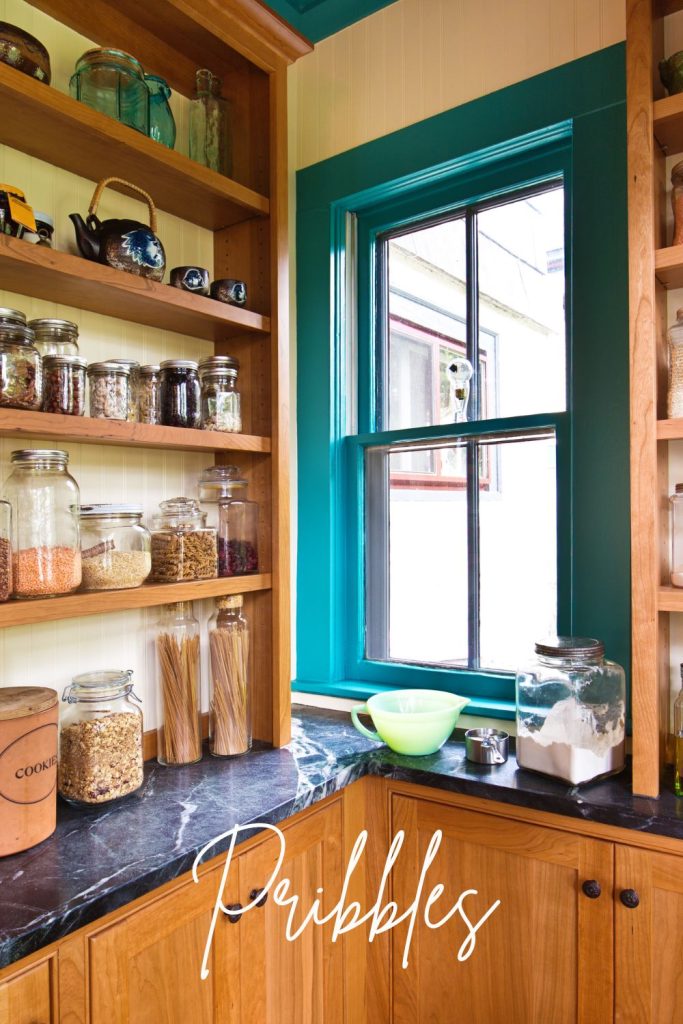
16- Add a Step Stool
A step stool is a must-have for making the most of your pantry space, especially for reaching those high shelves.
Here’s why it’s a smart addition:
- Easy Access: No more climbing on chairs or tiptoeing to grab items from the top shelf—keep everything within safe reach.
- Compact Design: Choose a foldable or slim step stool that’s easy to store when not in use.
- Kid-Friendly: Perfect for little helpers who want to grab snacks or help organize the pantry.
A simple step stool makes navigating your pantry safer and more convenient!

17- Use Mason Jars
Mason jars are a practical and stylish way to store small pantry items, offering both organization and charm.
Here’s why they’re perfect for your pantry:
- Consistent Look: Store items like nuts, seeds, dried fruit, or spices in mason jars for a uniform and visually pleasing arrangement.
- Airtight Seal: The lids keep your food fresh and protected from moisture, which is especially important for dry goods.
- Easy to Label: You can easily label the jars with chalkboard tags or stickers for clear identification.
Mason jars add a rustic touch to your pantry while keeping small items neatly organized and easy to access!

18- Keep Snacks at Kid-Level
If you have kids, organizing their snacks on lower shelves is a game changer. It allows them to grab what they want independently and keeps your pantry more organized.
Here’s how to make it work:
- Easy Access: Store granola bars, crackers, or fruit pouches on a lower shelf so little hands can easily reach their favorite snacks.
- Use Bins or Baskets: Group their snacks in small bins or baskets to make it even easier for them to find what they’re looking for.
- Teach Independence: Let your kids help themselves, which can also encourage healthier snack choices and responsibility.
Keeping snacks within reach for kids helps minimize clutter and makes it simple for them to pick out their own treats!
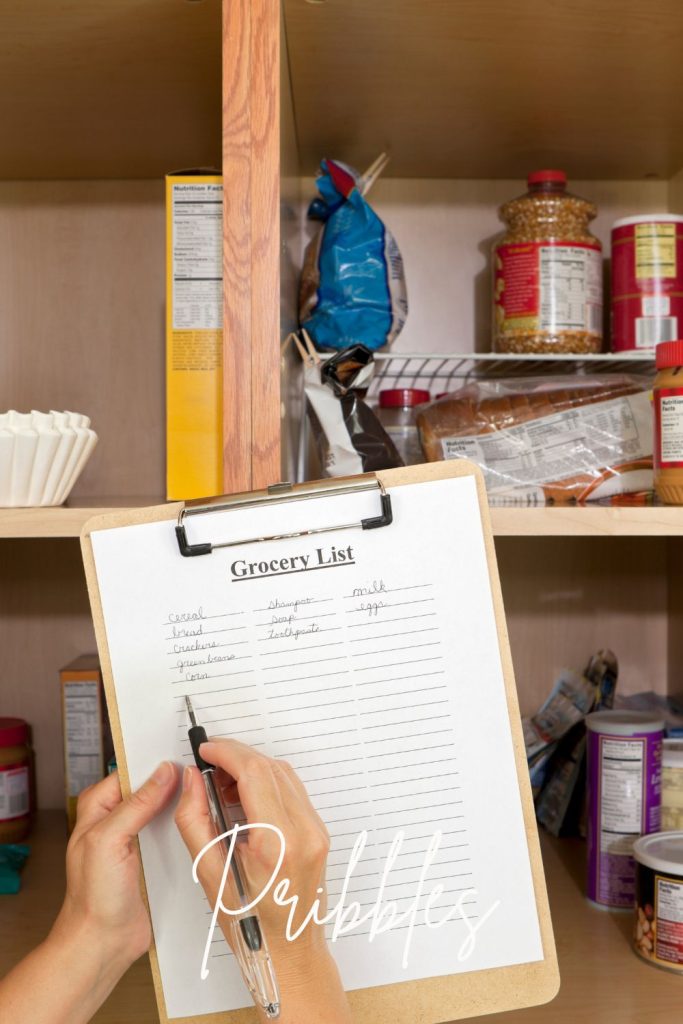
19- Use Magazine Holders
Repurposing magazine holders in your pantry is a clever and space-saving hack. These holders can help you store items vertically, keeping things neat and easy to access.
Here’s how to use them effectively:
- Water Bottles: Store cases of water bottles or drink boxes vertically to keep them organized and accessible.
- Canned Goods: Use magazine holders to store cans, keeping them upright and visible for easy access.
- Plastic Wrap & Foil Rolls: Keep rolls of plastic wrap, foil, and parchment paper in a holder so they stay neat and don’t get lost in the clutter.
Magazine holders are a simple yet effective way to maximize vertical space and make your pantry more organized!
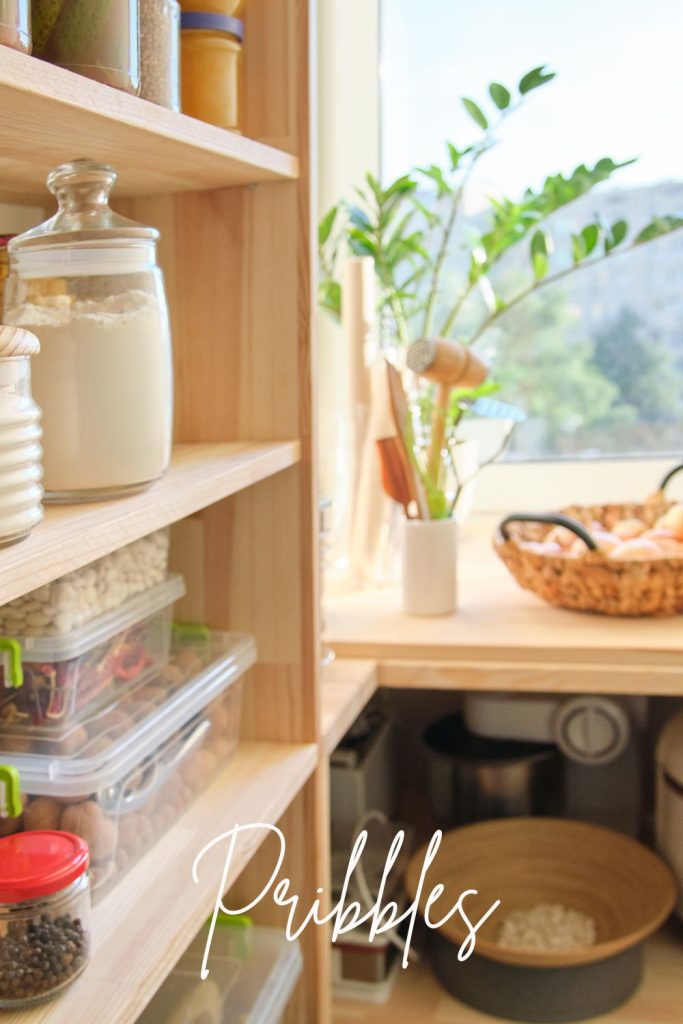
20- Add Lighting
Adding lighting to your pantry can make a huge difference, especially if it’s a bit dim or hard to see.
Here’s how to improve visibility and make your pantry more functional:
- Motion-Activated LED Lights: These lights turn on automatically when you open the pantry door, giving you hands-free lighting for easy access to items.
- Stick-On Puck Lights: If you don’t want to do any wiring, stick-on puck lights are a great option. Place them on the ceiling or shelves to brighten up dark corners.
- Under-Shelf Lighting: Consider installing small LED strips or under-shelf lights to illuminate each shelf, helping you find things faster.
With the right lighting, your pantry will be easier to navigate, and you’ll never have to fumble around in the dark again!

21- Store Non-Pantry Items Elsewhere
To maximize your pantry space for food storage, consider relocating non-pantry items to other areas of your home.
Here’s how to free up space and keep your pantry focused on food:
- Paper Towels & Napkins: Store these in a closet or under the sink instead of taking up valuable pantry shelf space.
- Cleaning Supplies: Keep cleaning products in a bathroom closet, utility room, or under the sink where they’ll be more accessible when needed.
- Extra Appliances: Small appliances like blenders, toasters, or coffee makers can be stored in cabinets or a dedicated storage closet.
By moving non-food items out of your pantry, you’ll create more room for food and essentials, making it easier to find what you need and keep everything organized!
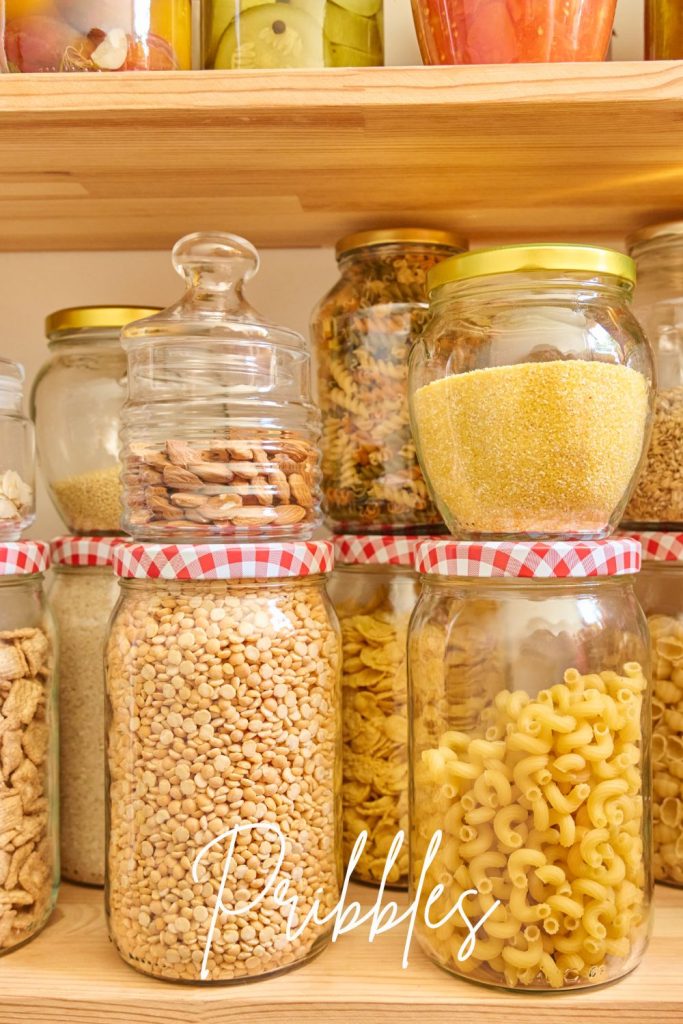
22- Add Decorative Elements
Making your pantry feel inviting doesn’t just improve its functionality—it can also add charm to your home.
Here’s how to infuse some style while staying organized:
- Small Rug: Place a cute, durable rug on the floor to add color and warmth while protecting the floor from spills or crumbs.
- Decorative Bins: Choose stylish bins or baskets for storing snacks, spices, or pantry staples. They’ll keep things organized and add a personal touch.
- Artwork on the Door: Hang a small print, chalkboard, or framed photo on the pantry door to give the space a cozy vibe.
By adding decorative elements, your pantry will not only be practical but also a pleasant part of your home to visit!
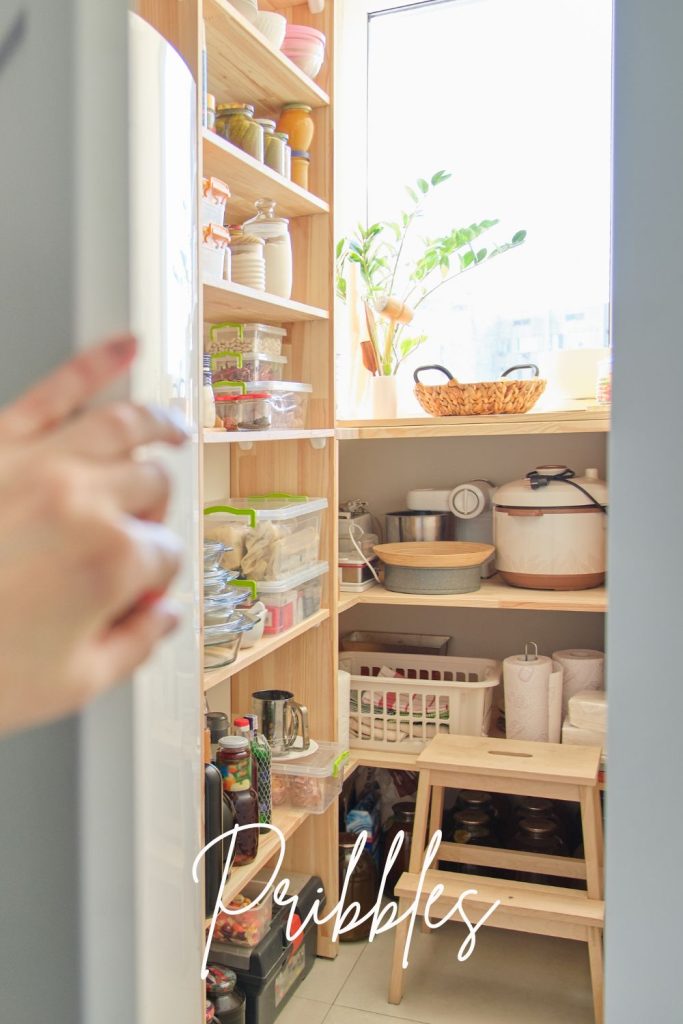
23- Regularly Declutter
Keeping your pantry organized requires a little maintenance, so scheduling a regular clean-out is key.
Here’s how to keep your pantry in tip-top shape:
- Toss Expired Items: Check expiration dates and get rid of any items that are past their prime, so your pantry stays stocked with fresh supplies.
- Reorganize: Every few months, reassess your pantry organization. Move things around if needed to make sure everything is still easy to access.
- Donate Unused Items: If you have items you never use, consider donating them to make more room for things you actually need.
A quick pantry clean-out every few months will keep things fresh, functional, and clutter-free, making your pantry easier to navigate!
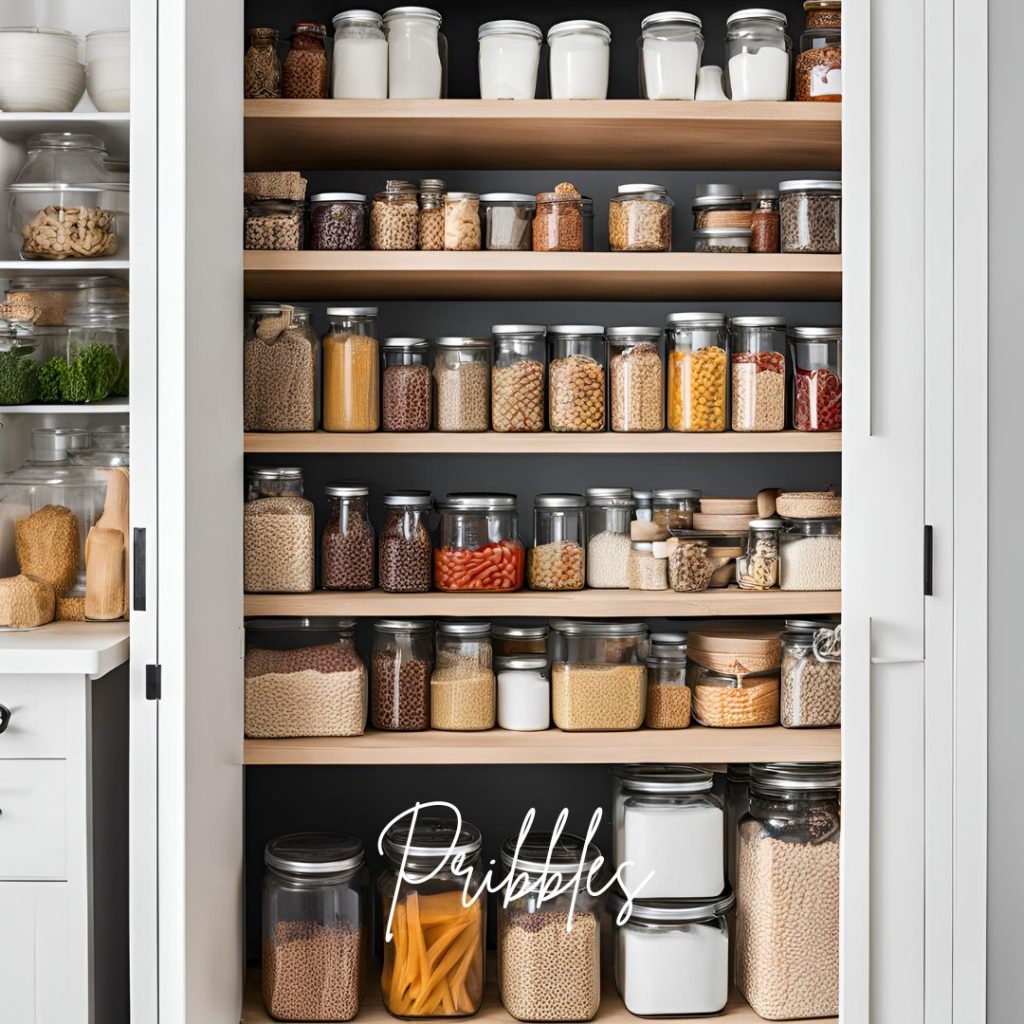
Final Tips
Organizing your pantry may seem like a big task, but with these simple tips, you’ll be amazed at how much more efficient and enjoyable it becomes.
A tidy pantry makes it easier to find what you need, save time while cooking, and even keep things fresh longer.
Plus, a well-organized pantry can make your whole kitchen feel more inviting!
Here’s a quick recap of some of the best tips:
- Group similar items together for easy access.
- Label everything so no one’s left wondering where things belong.
- Use clear containers to keep dry goods fresh and visible.
- Add a little style with decorative touches to make the space feel special.
With just a little effort, your pantry will be more organized, functional, and even a little more fun to use!
